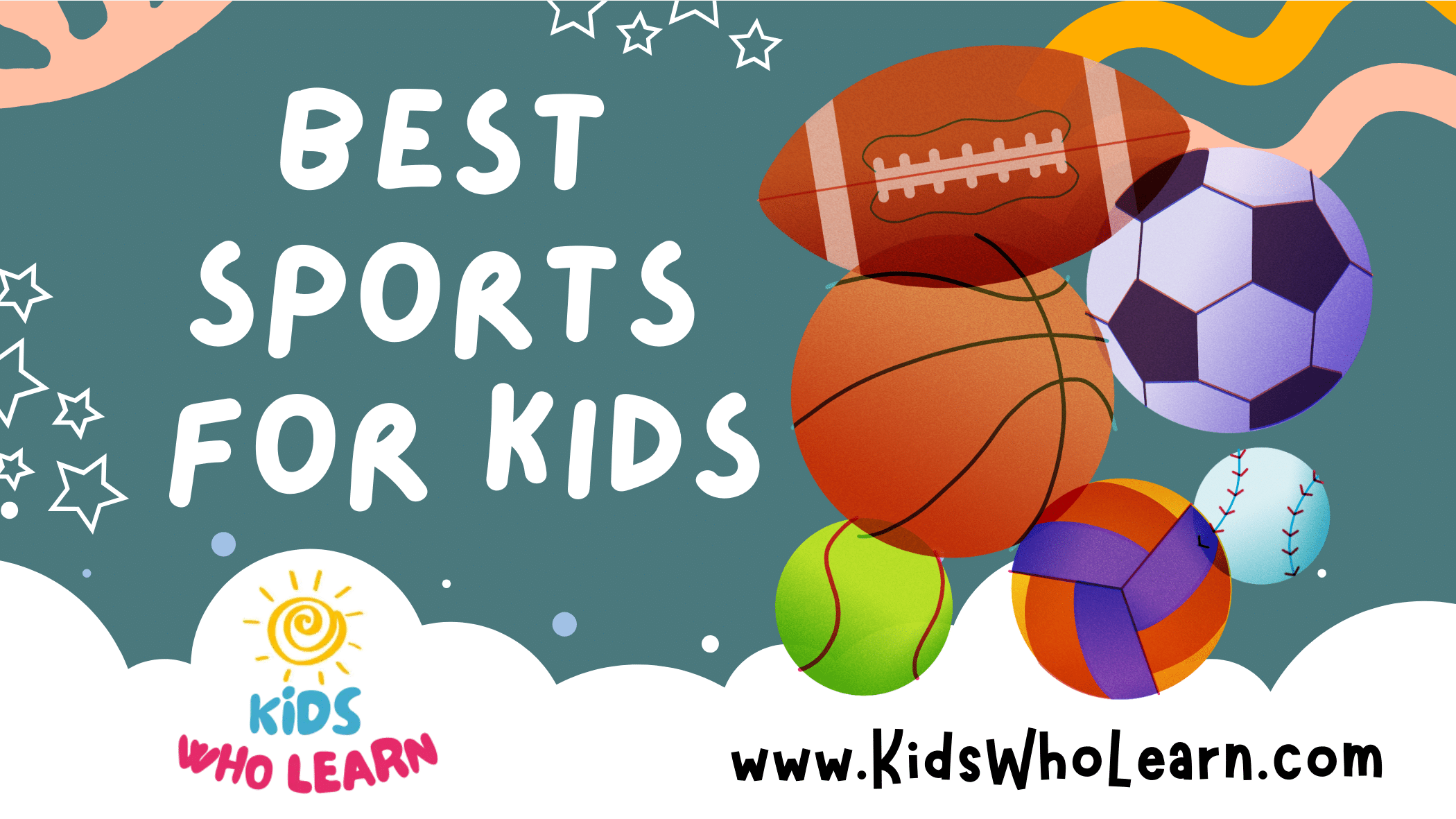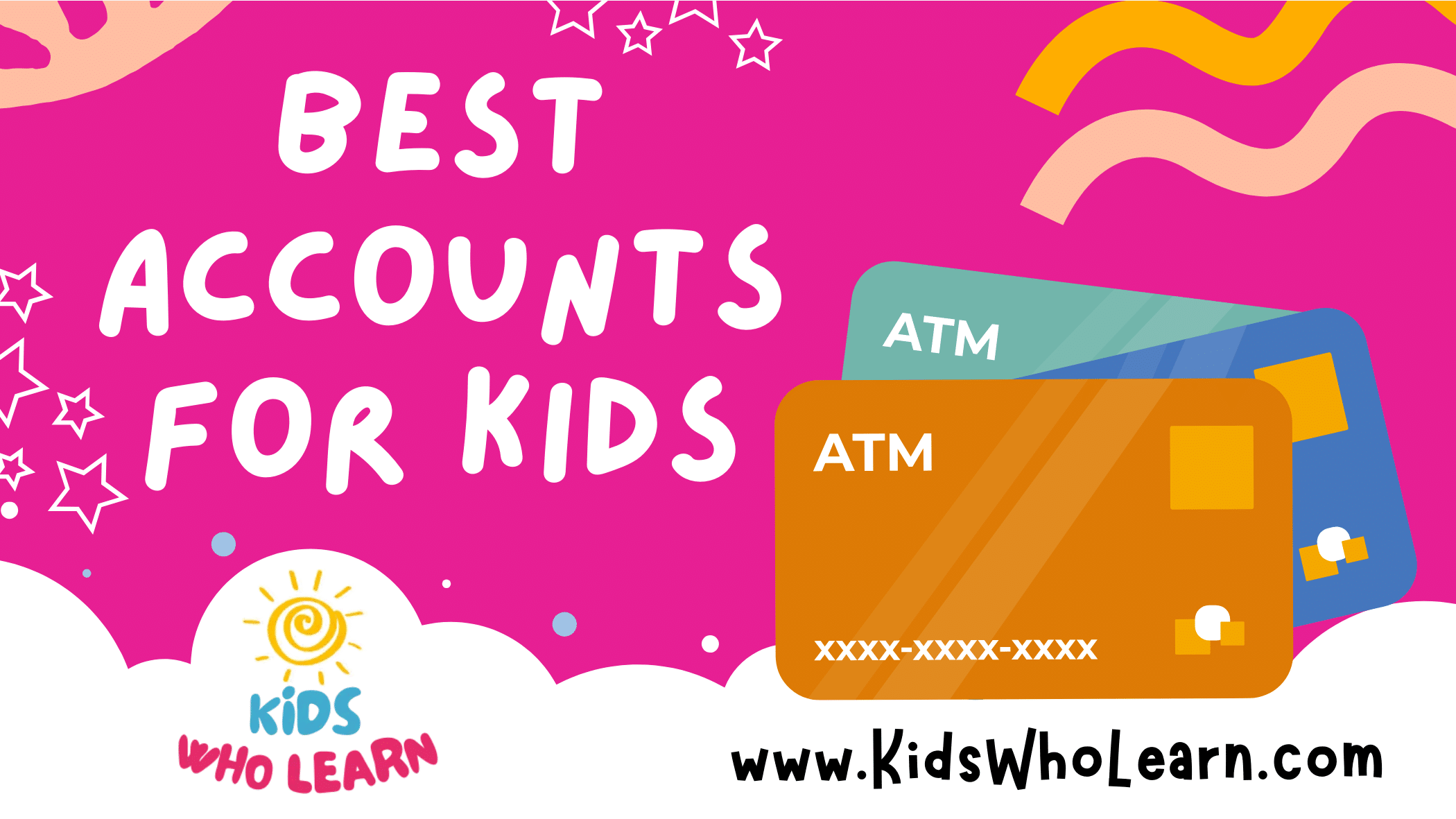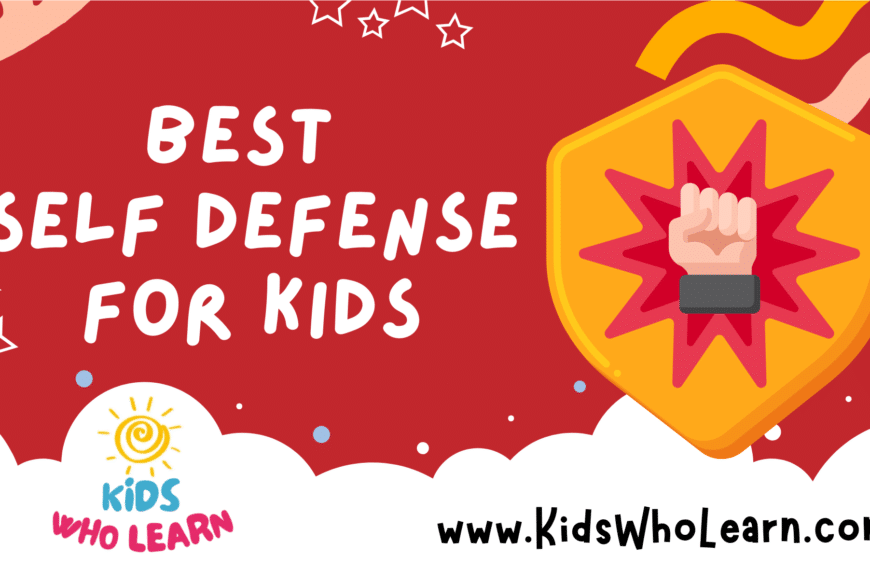Selecting the right sport for a child can dramatically enhance their physical, mental, and emotional development. Engaging in sports from an early age not only promotes a healthy lifestyle, but it can also teach children valuable life lessons like teamwork, discipline, and the importance of goal-setting. With a wide range of sports available, it’s beneficial to understand which ones are best suited for kids based on their personal interests, abilities, and social environments.
Safety should always be a primary concern when choosing a sport for children. It’s essential to consider the necessary precautions and protective gear required for each sport to minimize the risk of injuries. Additionally, fostering a positive and supportive sporting atmosphere contributes to a child’s willingness to participate and their overall enjoyment. Creating such an environment also can have a lasting impact on their attitude towards physical activity and competition throughout their life.
Key Takeaways
- Sports offer significant physical and developmental benefits for children.
- Safety and proper guidance in sports are crucial for a positive experience.
- Supportive environments in youth sports can yield long-term positive effects.
Benefits of Sports for Children
Participating in sports from a young age brings a multitude of advantages to your child’s development, infusing healthy habits and valuable life skills into their daily routine.
Physical Health Advantages
Engaging in sports contributes significantly to physical health by enhancing strength, coordination, and motor skills. Regular physical activity is key in combating childhood obesity, promoting weight control, and fostering health and wellness.
- Exercise: Regular engagement in sports ensures children get necessary exercise, which is crucial for developing gross motor skills and increasing body awareness.
- Strength and Coordination: Active participation in sports helps in refining a child’s physical strength and coordination, providing a foundation for a healthier lifestyle.
Psychological Growth
Sports play a vital role in the psychological development of children, influencing areas such as self-esteem and self-control.
- Improved Self-Esteem: Achievements in sports boost your child’s confidence and promote a positive self-image.
- Focus and Discipline: Sports require concentration and dedication, skills that translate to other aspects of life, like academics and personal responsibilities.
- Stress Management: Regular physical activity provides an outlet for rest and alleviating stress, favoring psychological balance.
Social and Team Skills Development
Participating in sports also hones essential social skills and teamwork capabilities, preparing children for group dynamics in various contexts.
- Teamwork and Friendship: Through sports, children learn to work with others, fostering teamwork and building lasting friendships.
- Communication and Leadership: On the field, clear communication is critical, and sports also offer opportunities to develop leadership skills.
- Sportsmanship: Children learn valuable lessons about healthy competition, respect, and sportsmanship.
By engaging in sports, children not only enhance their physical stature but also pave the way for comprehensive personal growth, instilling skills that will benefit them throughout their lives.
Choosing the Right Sport
Selecting the ideal sport for your child involves understanding their interests, considering age appropriateness, and evaluating skill levels.
Assessing Your Child’s Interests
To foster a love for physical activity, it’s vital to align sports with your child’s interests. Observe their natural urge to play and take note of activities that captivate them. Whether they enjoy team dynamics or prefer individual challenges can guide your choice.
- Team-Oriented: Soccer, basketball, relay races
- Individual Centric: Tennis, gymnastics, martial arts
Age-Appropriate Sports
Ensuring the sport matches your child’s age and developmental stage is crucial for their safety and enjoyment. Younger children benefit from sports that develop basic motor skills, while teens may handle more complex sports with advanced strategies.
- Ages 3-5: Simple activities like running games, swimming, tumbling
- Ages 6-9: Sports focusing on hand-eye coordination like softball, soccer
- Ages 10-12: More competitive sports with strategy elements like basketball, volleyball
- Teens: Physically demanding sports with intricate rules like football, hockey, or track and field
Skill Level Considerations
Your child’s current skillset should influence your sport choice. Begin with sports that require basic skills and have opportunities for progression. Enhancing balance, agility, or hand-eye coordination can be great starting points for future athletic pursuits.
- Basic Skills: Swimming, cycling, running
- Intermediate Skills: Baseball, soccer, dance
- Advanced Skills: Basketball, gymnastics, fencing
Focus on finding a balance between challenging your child and providing them with the opportunity to succeed, regardless of the sport they choose.
Overview of Popular Sports for Kids
Selecting the right sport can significantly contribute to your child’s physical and social development. Here, we explore a variety of sports suitable for children, categorizing them into team, individual, and adventure or alternative sports.
Team Sports
Team sports offer valuable opportunities for children to learn teamwork, cooperation, and social skills. Most team sports involve either contact or non-contact play.
- Soccer: A globally popular, non-contact team sport, it emphasizes endurance and coordination.
- Basketball: Helps in improving hand-eye coordination and encourages team strategy.
- Baseball and Softball: Focus on hand-eye coordination, strategic thinking, and patience.
- Volleyball: Non-contact sport that improves reflexes and teamwork.
- Hockey: Can be played on ice or in a field setting, requires agility and is often a contact sport.
- Lacrosse: A contact sport gaining popularity, it combines endurance and tactical skills.
Individual Sports
Individual sports can foster self-reliance, focus, and personal goal setting.
- Swimming: Non-contact and a great full-body workout, suitable for all ages.
- Tennis: Enhances agility, strategy, and can be played as a non-contact single or doubles game.
- Gymnastics: Strengthens the body and improves flexibility and balance.
- Martial Arts: Teaches discipline and self-defense. It can be non-contact or contact depending on the style.
- Running and Track and Field: Develops cardiovascular health and can range from sprints to distance running.
- Dance: Provides a creative outlet as well as physical exercise.
- Golf: Enhances precision and patience, a non-contact sport that can be played individually or in teams.
Adventure and Alternative Sports
These sports can instill a love for the outdoors and encourage a sense of adventure.
- Climbing and Hiking: Build strength and promote an appreciation of nature.
- Horseback Riding: Develops balance, coordination, and a bond with animals.
- Snowboarding: Tests balance and offers an adrenaline rush.
- Roller Skating and Skateboarding: Enhances coordination and can infuse an element of fun and thrill.
- Cycling and Biking: Good for cardiovascular fitness and can be a mode of transportation.
- Archery: Improves focus and hand-eye coordination in a non-contact setting.
Whether your child prefers the camaraderie of team sports or the focused determination of individual pursuits, there is a wide array of options to choose from that can align with their interests and abilities. Adventure and alternative sports can also provide unique experiences that enrich your child’s physical capabilities and resilience.
Safety and Injury Prevention
Safety and injury prevention in sports are crucial for your child’s well-being. Knowing the risks, adhering to safety protocols, and receiving proper coaching are key to keeping them safe.
Understanding Risks in Sports
You must recognize that different sports come with varying risks of injury. Contact sports like football and hockey inherently present higher risks due to physical collisions. Non-contact sports, such as running or swimming, also carry risks, often from repetitive motions. Awareness of these risks helps in taking the necessary steps to prevent injuries:
- Contact Sports: Higher probability of collision-related injuries (e.g., concussions, fractures).
- Non-Contact Sports: Common injuries include stress fractures or muscle strains due to overuse.
Protective Gear and Safe Practices
Using the right protective gear is essential in minimizing the risk of injury during sports and physical activity. Here’s how you can protect yourself:
- Headgear: Helmets for cycling, skating, or contact sports.
- Pads: Knee and elbow pads for skateboarding; shin guards for soccer.
- Mouthguards: Especially important in contact sports to protect teeth and gums.
Following safe practices involves more than equipment—rest and recovery are just as important to prevent overuse injuries. Be sure to:
- Rotate Activities: Avoid repetitive strain by varying physical activities.
- Sufficient Rest: Ensure adequate rest between intense physical activities.
The Importance of Proper Coaching
Effective coaching goes beyond teaching sports skills—it includes instilling safety awareness and leadership skills. A good coach ensures that players understand and adhere to safety protocols, reducing the risk of injuries. They should also provide guidance on:
- Technique: Proper form and technique in sports can prevent many common injuries.
- Emergency Protocols: Coaches must be prepared and train the team to respond to injuries.
Coaches are there to provide a safe learning environment and to foster the development of each player, ensuring that they can enjoy sports while staying safe.
Mental and Emotional Benefits
Participating in sports provides your children with essential mental and emotional health benefits, from enhanced self-confidence to improved focus and the development of a healthy sense of competition.
Boosting Self-Esteem and Confidence
Engaging in sports can significantly uplift your child’s self-esteem by providing them with a sense of accomplishment upon mastering a new skill or achieving a personal best. The structured environment of sports encourages the development of discipline and self-control, both of which contribute to a strong self-image.
- Self-Esteem: Success in sports tasks translates to improved self-esteem.
- Confidence: Regular participation in sporting activities helps children become more confident in their abilities.
Stress Reduction and Focus
Sports can offer a beneficial outlet for stress relief, aiding in your child’s mental health. The physical activity involved in sports increases endorphins and helps your child to maintain focus during games and practices, which can also carry over to their academic and personal life.
- Stress: Physical activity is known to reduce stress levels effectively.
- Focus: Sports require and build a high level of focus, which can improve concentration in other areas.
The Role of Healthy Competition
Exposure to healthy competition through sports teaches your child valuable life lessons about winning and losing gracefully. It fosters a sense of self-control and discipline, as well as confidence when interacting with peers, setting the foundation for fair play and respect in all aspects of life.
- Healthy Competition: Encourages teamwork and personal growth while managing winning and losing.
- Competition: Introduces the concept of striving for personal and team goals within rules and structure.
Creating a Supportive Sports Environment
In youth sports, a nurturing atmosphere can significantly impact participation and enjoyment. This environment extends beyond the playing field, including the manner in which parents, coaches, and teammates interact and support one another.
Encouraging Positive Parental Involvement
Build a Foundation of Support: Encourage parents to provide a stable and affirmative presence. Their role extends from attending games to reinforcing positive attitudes toward practice and competition. Here’s how:
- Be Present: Simply showing up to games and practices signals investment in your child’s interests.
- Offer Constructive Feedback: Balance praise with constructive criticism to promote growth without discouragement.
- Emphasize Enjoyment Over Winning: Foster a love for the game itself, not just the outcomes.
Fostering Team Spirit
Cultivate a Sense of Unity: A team that works together effectively leverages the social benefits of sports. To strengthen team spirit among young athletes, consider:
- Group Goals: Set collective objectives that require cooperation and teamwork.
- Build Relationships: Organize social events outside of regular sports activities to deepen bonds between players.
- Highlight Everyone’s Role: Ensure that every team member understands their importance to the team’s success.
Recognizing Achievement
Offer Recognition Appropriately: Regular acknowledgment can provide motivation and affirm the values of sportsmanship and hard work. Achievements should be recognized in various forms:
- Verbal Praise: A simple acknowledgement can boost morale and confidence.
- Rewards: Whether it’s a certificate, a trophy, or a team celebration, rewards should reflect both individual and team accomplishments.
- Opportunities for Leadership: Providing leadership roles or additional responsibilities recognizes maturity and dedication.
Incorporating these strategies into your family involvement can lead to enriching experiences for young athletes, fostering a supportive environment that values teamwork, leadership, and sportsmanship.
Long-Term Impact of Youth Sports
Participation in youth sports offers you a pathway to numerous benefits extending far beyond immediate physical health. It can pave the way for educational opportunities, instill lifelong fitness habits, and teach you the importance of maintaining a healthy balance between competition and rest.
Educational Opportunities and Scholarships
Youth sports can be a ticket to educational advancement through scholarships. Colleges and universities often offer athletic scholarships that can ease the financial burden of higher education. They typically seek:
- Student-athletes with strong leadership qualities
- Those who demonstrate teamwork and communication skills
The opportunity to compete at the college level can also open doors to other future opportunities in education and professional spheres.
Lifelong Skills and Fitness
Commitment to youth sports equips you with important skills:
- Discipline and focus – Crucial for personal and professional success
- Physical activity habits – Encouraging lifelong fitness and health
Your consistent exercise and training can lead to a deeper appreciation for physical activity, which is key to preventing chronic diseases and maintaining a healthy lifestyle.
Preventing Burnout and Ensuring Balance
While youth sports offer many benefits, they also come with the risk of burnout. It’s important for you to:
- Recognize the signs of burnout – such as chronic fatigue and lack of enjoyment
- Ensure balance in life – by combining sports, academics, and leisure
Maintaining balance helps you enjoy the benefits of sports without the potential negative impact of overtraining or excessive pressure.
Frequently Asked Questions
In this section, you’ll find targeted advice to help you choose the best sport for your child based on age, interests, and developmental benefits.
What are ideal sports for young children around 4 to 5 years old?
At ages 4 to 5, your child might enjoy simple, play-based sports such as soccer, gymnastics, or swimming. These sports can help develop coordination, balance, and basic motor skills.
How do you determine the most suitable sport for a child?
To find the most suitable sport for your child, consider their personality, interests, and physical abilities. Observe which activities they enjoy and excel in, and consult with coaches or instructors who can offer insights based on their experience with children.
What are recommended sports for preteen girls aged 10 to 12 years?
For preteen girls aged 10 to 12, team sports like basketball or volleyball can promote teamwork and social skills, while individual sports such as tennis or athletics can help foster self-confidence and discipline.
What are some fun and engaging sports activities for children in kindergarten?
Children in kindergarten often enjoy sports that involve play and less structured activities. Sports like tee-ball, dance classes, or martial arts can be both fun and engaging, teaching fundamental skills through games and interaction.
What are suitable non-competitive sports options for children?
Non-competitive sports options for children include activities like rock climbing, hiking, or skateboarding. They provide physical exercise and skill development without the pressure of competition.
Which sports are considered to be the healthiest for developing children?
Sports that offer a balance of cardiovascular activity, strength training, and flexibility—such as swimming, soccer, and martial arts—are considered healthy for developing children. They support overall fitness and can lay a foundation for a healthy lifestyle.










